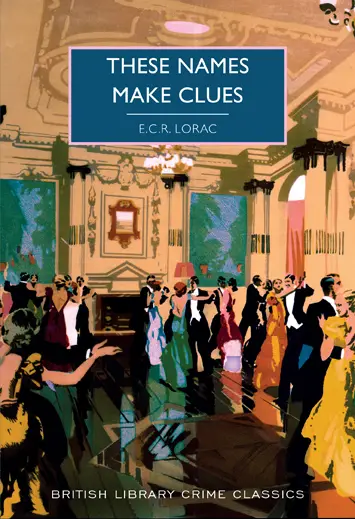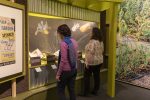These Names Make Clues by ECR Lorac – Review

By Sandra Callard
What a strange and cumbersome title this book has. Part of the British Library’s vast array of crime classics, mostly written during the twenties and thirties, the rather cumbersomely-titled These Names Make Clues by ECR Lorac is a fascinating and vastly entertaining read. You need your wits about you to claw your way through the tortuous clues, but crime purists will love attempting to unravel them.
The plot concerns an evening of entertainment given by a brother and sister who live in an upmarket part of London, for a selection of artistically intelligent people who are particularly apt at solving puzzles of the literary kind. Many of them are successful authors in their own right, and others are connected to the world of literature through a variety of roles. When murder rears its ghastly head, right in the middle of the entertainment, the case is taken over by the suave and polite Chief Inspector Macdonald, whose brain equates easily with those of the collected intelligentsia. A complicated cat and mouse series of clues, rejections, discoveries and secrets are reeled out thick and fast, necessitating the need for a break and a cup of tea, both for the characters and the reader.
 “Detection skills”
“Detection skills”
The speech of the well-heeled characters of the thirties is a joy to read. Obviously it contributes nothing in the way of clues, but the wonderfully clever conversations, almost verging on the insulting, but which are too witty to take offence to, are an art in themselves. This theme is lifted to greater heights when the inevitable young and eager journalist becomes involved in the case. He cannot utter a sentence without the reader smiling, laughing or simply abandoning the story to figure out what his wonderfully convoluted speech means. It is gloriously entertaining, albeit a bit of a challenge to a brain that is not fully used to thirties lingo.
The twenties and thirties were bang in the middle of what became known as the Golden Age of Crime, as authenticated by the likes of Agatha Christie, Dorothy L Sayers and Margery Allingham, and were quite different to the raw and explicit publications of today. Crime books did not glorify the act of murder but rather concentrated on the skill of catching the killer. Readers liked the skill of the chase, and the more convoluted the clues, the harder the reader had to work. The crime solvers were not always police detectives, but characters who had honed their detection skills through life and experience, or had a profusion, as in the case of Hercule Poirot, owner of the celebrated ‘little grey cells’.
These Names Make Clues was written in 1937, towards the end of the Golden Age. Most writers used some quirk in their name to symbolise their significance and eagle-eyed readers will note Lorac’s own device when we discover her first name was Carol. It’s very appropriate to this particular book, which relies so much on working out the meanings of words and sentences. It is a book to read while sitting round a fire in winter, to frustrate when you can’t figure out the clues, and for feeling victorious with the characters when the final, complicated, but clever, denouement arrives.
‘These Names Make Clues’ by ECR Lorac is published by the British Library, £8.99 paperback









